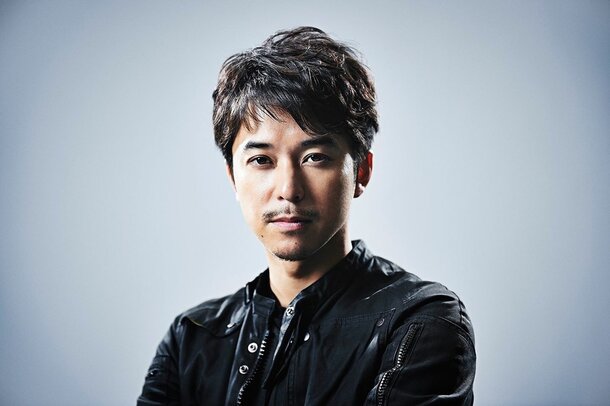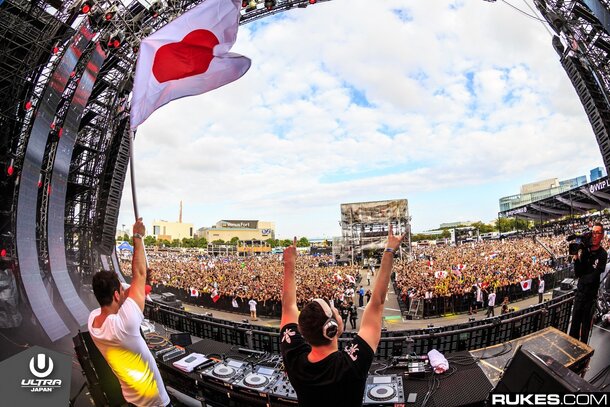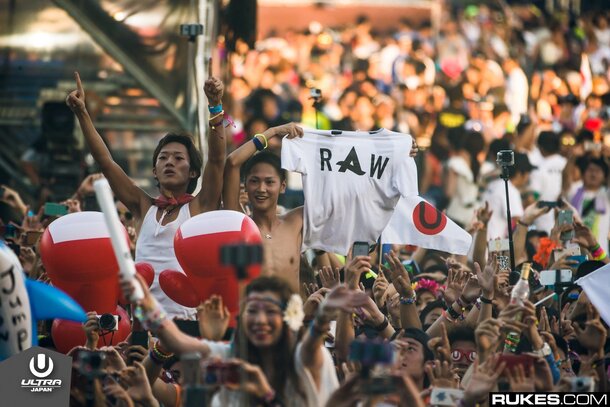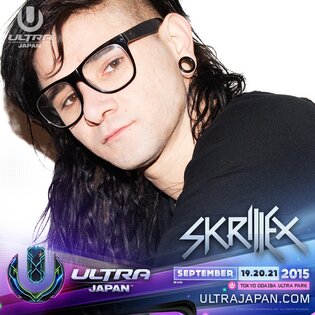Ultra Music Festival (UMF) is the largest urban music festival in the world! UMF, held in Miami, USA every March, triggered a wave of enthusiasm and turned into a movement, now taking place in other locations all over the world, including Europe, Brazil, South Africa, and Korea. In Japan, too, the first ever “Ultra Japan” was held in 2014, in Odaiba, Tokyo. As the second annual Ultra Japan draws nears, we spoke with the event’s creative director, Kenji Kohashi, and pressed him for information on the distinctive charm of Ultra Japan, and the event’s future prospects.
Ultra Japan: Focusing on “Festival and Travel”
ーUMF is a monster event held in locations all around the world. Please tell us, what is characteristic or distinctive about Ultra Japan?
Kohashi: Firstly, in terms of event production, each individual set at the Ultra Japan venue is intricately and elaborately set up. I think that, thanks to our skilled Japanese staff at hand, even the smallest of props on set are a pleasure to behold. For example, the U-shaped UMF logo on the stage set follows the same blueprint that all other UMFs around the world do, but the fine details and craftsmanship are done exquisitely.
ーThe event’s venue, Odaiba, is easy to access from Haneda airport. Was this planned intentionally to accommodate for guests arriving from both inside and outside of Japan?
Kohashi: Odaiba is situated just about smack in the middle between Narita and Haneda airports--the two windows welcoming overseas visitors into Japan. With Japan included, UMF takes place in 9 countries around the world, and in each country the event is attended by many tourists as well. For that reason, we were pretty focused on the two points of “festival and travel.” We chose Ultra Japan’s venue in a way which would ensure that visitors can both get their full share of fun out of the event, as well as enjoy sight-seeing.
In addition, the venue is also close to public transportation. If the venue is in an inconvenient location, only people who are big fans of the event will come out, but if the event is in a very convenient location, there may be more visitors who happen to be dropping by casually, as well as people who come because they were invited by their friends. And, it just might happen that this music festival, to which somebody casually decided to drop by, could be a life-changing experience for them.

ーWhat else is special about Ultra Japan?
Kohashi: Through this event, we are consciously focused on portraying what “Japanese-ness” is. I often think, what the world stereotypically imagines “Japanese-ness” to be is an image of the old streets, stores and houses of traditional Kyoto. In Japan, I think that the so-called traditional “Japanese spirit,” representing “harmony,” does indeed exist. However, I believe that we are also capable of taking the good things from within Japan and from other countries, put them together in a harmonious fashion, strike a good balance, and show it to the world. This is the not the ability to imitate, but the power to beautifully combine cultures from around the world and display it in an entirely new form. That is the strength of Japan, and the sort of “Japanese-ness” we want to portray at Ultra Japan.
ーIncluding the portrayal of “Japanese-ness”, what else is Ultra Japan attempting to achieve?
Kohashi: We would like to deliver charm and appeal more beautifully than any UMF in the world ever has. Besides the venue’s set-up, another one of Ultra Japan’s strengths is none other than the fashion of the visitors themselves. Last year, despite it being the first ever Ultra Japan, the crowd that gathered at the event donned unique fashion, no less impressive than that of the crowds at UMF in Miami. Fashionable people gathering in such numbers, in and of itself, is truly a magnificent spectacle to witness. UMF has a history of 16 years behind it, and has slowly built up a culture of fashion, but there really isn’t any music festival out there which, in only a single year, has been able to attract fans who dress up just for the occasion, whether in unique fashion or in cosplay, the way that Ultra Japan has. Although Japan’s cosplay culture is clearly visible at Ultra Japan, after witnessing UMFs around the world, I genuinely felt that Ultra Japan portrays a unique sort of worldview.

Causing a Revolution in the Mindset of Visitors
ーIs there anything you desire from the attendees of Ultra Japan?
Kohashi: With information so readily available through the internet in today’s society, I feel that the younger generation in Japan are becoming increasingly “realistic”. In fact, I sense a lack of dreams, a sort of shut-down mentality, embodied in notions such as, “I don’t have to have big ambitions like going abroad,” or, after watching entertainment from around the world on the internet, “bands as amazing as these will never be born in Japan,” and the like. That’s why I wanted to stir a change in the mindsets of those who live with such negative outlooks, showing them that “even from this very place where we are living right now, change occurs,” and that “the future is changing!” I’d be delighted if the experience of Ultra Japan galvanized someone to go abroad, or triggered a revolution in the mindset of each individual visitor.
ーCould you elaborate on what it means to “motivate people to go abroad” and “start a revolution” through the event?
Kohashi: With the event itself, we simply aim to deliver music that people will have tons of fun enjoying. First and foremost, we want everyone who comes to the event to have the time of their lives. What I’m saying is that, through the strong memory of how insanely fun the event was, we hope to encourage people, whether it be to encourage them to go and attend UMF in other countries, or to galvanize each individual to take new action in their lives.
ーYou mentioned that you wish to create a new sort of desire, that not even you yourself could have imagined.
Kohashi: Take this for example: when Tokyo Disneyland was first established in 1983, people who had no interest in amusement parks also went to check it out, and after realizing how fun it was, fell in love with it, and in the end went all the way to experience Disneyland in Florida. When they go to Florida, they gain not only the experience of going to Disneyland--also born is the experience, and the process, of travelling to a foreign land. In the same way, Ultra Japan can trigger people with no interest whatsoever in dance music to begin to travel abroad, get inspired, and trigger those who keep themselves cooped up inside the borders of Japan to change their ways of life. I personally think that it would be wonderful if more and more people can become inspired this way; then 10 or 20 years down the line, more and more people who play an active role in the international community will be born.

Giving Rise to a New Culture Through Ultra Japan
ーUltra Japan, unlike other entertainment events in Japan, does not prohibit filming, correct?
Kohashi: In other countries, people know that attendees posting pictures and videos and such about what’s happening at an event is a good way to promote and get publicity for the event. In Japan, however, the idea that “taking photos or videos of artists is strictly forbidden” is very deep-rooted. That’s why Ultra Japan wants to take one step toward dissolving that idea. The front of the ticket says, ‘this music festival was created by everyone, so all of you are the stars too!’ to try and insist that “since we’re taking pictures and videos of you guys for official use, you guys can take pics and videos too!” One of the things we consciously focus on in the production of Ultra Japan is that, not only do we want attendees to be aware that they can post photos and videos of the artists’ performances, as well as the event venue, and be able to easily show their friends and acquaintances “I went to this amazing live concert called Ultra Japan” with a single glance at their post, we also want those who see the posts to think, “Oh man, I want to go to this event someday!”
ーIf content begins being distributed via the internet, Japan’s live concert scene will change quite a bit, won’t it?
Kohashi: Yes, I think the impact will be pretty huge. But what I’m more interested in are the effects in the long-run. I believe that by making the way that Ultra Japan does things widespread throughout Japan, various rules and regulations will loosen up, and events and communities can also change from there on out. When the 2020 Tokyo Olympics rolls around, in order to make foreign visitors think, “hey, nightlife in Tokyo is pretty darn fun,” we need to change the mindsets of tons of people, and eventually that of entire cities as well. In this way, I believe that Ultra Japan has an extremely important role.

One Day, Collaboration with Otaku Culture
ーUMF really has an interesting new approach and perspective; its impact goes beyond the music festival itself, and influences existing culture and regulations.
Kohashi: I really appreciate that you think so. Something really big for Ultra Japan is that fact that we were able to invite artists across various genres, including David Guetta, and the “god of trance” Armin van Buuren, the creator of the genre brostep(1), Skrillex, the trap music(2) artist DJ Snake, and many more, in order to appeal to fans of an extensive variety of music. I believe that at Ultra Japan people will really be able to experience to the fullest the true pleasure that is only possible at a music festival which allows people to encounter a varied range of music.
The so-called “times” are just like a seesaw, where various cultures and trends constantly rise up and sink under. With music festivals, too, we are aware that simply chasing the trends won’t work--we must be on the offensive and constantly suggest new things to the audience. This is, so to speak, challenging even the trends which have the strongest currents of support. It is important to take this resistive stance. For instance, at large-scale electronic dance music concerts in Japan, the popular way of doing it is to place only famous artists from overseas on the main stage, but at Ultra Japan, we have the Japanese DJ Emma--the leader of dance music in Japan--placed as the main.



ーRegarding “constantly suggest new things to the audience”, what do you have in mind for this year’s Ultra Japan?
Kohashi: I think that one of the keywords for this time is “otaku culture.” In other words, Japanese anime and games. The DJ and producer Porter Robinson began his career as a DJ thanks to Dance Dance Revolution, Deadmau5 got the autograph of the creator of Super Mario tattooed onto his arm--it’s clear that in certain ways dance music has received influence from Japanese games, and, in reality, you can feel the bond between otaku culture and dance music quite strongly.
ーFrom what I understand, the type of people who attend Ultra Japan are not exactly “otaku”--what are you thoughts on this?
Kohashi: It’s true indeed that they are very different. Watching events aimed at otaku audiences, such as “Niconico Chokaigi”, I was really shocked by the way that the worldview of the star on the dance music stage, presented by Ultra Japan, was being portrayed so differently from the otaku’s perspective. It was a real shock. I think that in Japan many of those who are into dance music have knowledge of foreign languages, such as English, with the goal of going abroad, whereas those who are into anime and manga and such, tend to love the local culture originating from within Japan. So comparing these two types of people, it feels as though their two worlds are completely exclusive from each other.
ーHowever, you feel that there is a new sort of potential here, which can only be made possible through Ultra Japan?
Kohashi: That’s right. I actually think that the paths of these two opposite worlds could draw nearer. And if that is accomplished--not only at Ultra Japan, but in the future of Japan, a new culture and new content will be born. I imagine that this would be something truly amazing. The fact that there is an absolute divide between these two worlds right now is such a shame.
ーIf what you imagine becomes a reality, the way people view “otaku” will change even more than it has now, won’t it?
Kohashi: In the English-speaking world, previously “geek” tended to hold the meanings of “computer maniac” and being “socially awkward,” but now, thanks to Apple and Microsoft, the world of digital content has spread, and the image of “geek” has changed to hold a more positive impression.
In Japan today, there are more than a handful of people who are still unable to sweep away their negative impressions of the type of person known as the Japanese “otaku.” However, I believe that hidden within otaku is a great potential. If culture and content that people outside of the “otaku” group could also enjoy and get into were to be produced, I think it would turn the circumstances into something pretty interesting and cool. Seeing those attendees I mentioned earlier who come to Ultra Japan in cosplay, I couldn’t help but feel that this potential is something real. Therefore, if us music lovers and otaku get together, and dig deep down into the existing cultures of each individual group, we could give rise to something new and exciting. Like so, some day, I dream of doing a collaboration with otaku culture.
RELIVE ULTRA JAPAN 2014 (Official Aftermovie)
(1) A derivation of dubstep, also incorporating elements from a wide range of other genres. Its characteristics include mid- to high-range pitches, aggressive sounds, and tunes ranging from “hard” to “gentle”. Skrillex is the first artist to produce brostep, and has contributed greatly to its promotion and commercialization.
(2) A type of rap music that became popular in the 2000’s. Its characteristics include melodies which freely use electronic sounds, snare drums, and heavy sub-bass drum beats. In America’s nationwide hip-hop and dance music charts for 2015, many songs of this genre were within the Top 40’s. This genre is receiving much attention all over the world in 2015.
©ULTRA JAPAN 2015
This is a Tokyo Otaku Mode Original Articles.

 Shopping Guide
Shopping Guide





















